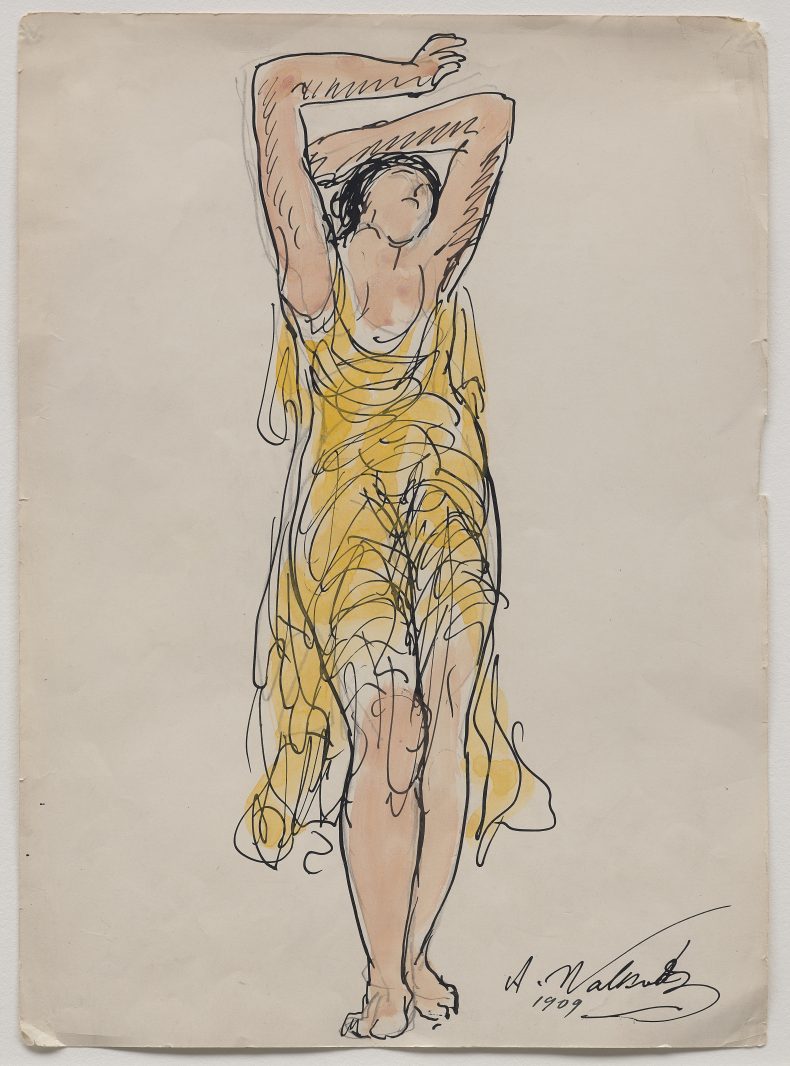 ‘Four things to see’ is sponsored by Bloomberg Connects, the free arts and culture app. Bloomberg Connects lets you access museums, galleries and cultural spaces around the world on demand. Download the app here to access digital guides and explore a variety of content.
‘Four things to see’ is sponsored by Bloomberg Connects, the free arts and culture app. Bloomberg Connects lets you access museums, galleries and cultural spaces around the world on demand. Download the app here to access digital guides and explore a variety of content.
Each week we bring you four of the most interesting objects from the world’s museums, galleries and art institutions, hand-picked to mark significant moments in the calendar.
Boldly departing from the confines of traditional ballet, Isadora Duncan (1877–1927) pioneered a style of dance that emphasised natural, intuitive movement. Inspired by classical Greek art, folk dances and the forces of nature, she created dances marked by freedom and athleticism.
Affectionately known as ‘the barefoot dancer’, Duncan captivated the artistic imagination and was immortalised in the work of artists including Auguste Rodin and Antoine Bourdelle. Duncan’s fluid style also inspired generations of dancers who continue to uphold her legacy.
On 17 March 1900, at the age of 22, Duncan gave her first ever European performance, in London. To mark the anniversary of the occasion, this week we look at four works depicting the ‘mother of modern dance’ herself.

Isadora Duncan. Ave Maria (1927), Josep Clarà. Museu Nacional d’Art de Catalunya (MNAC), Barcelona
Isadora Duncan. Ave Maria (1927), Josep Clarà
Museu Nacional d’Art de Catalunya (MNAC), Barcelona
In this pencil, ink and wash drawing, Josep Clarà captures Duncan’s dynamism as she lunges forwards with outstretched arms, her head thrown backwards in a dramatic gesture that exposes her throat. The close friendship between Duncan and the Catalan sculptor inspired some of his most inventive and vital drawings. Click here to find out more.

Primavera costume worn by Isadora Duncan (c. 1900). Jerome Robbins Dance Division, The New York Public Library for the Performing Arts
Primavera costume worn by Isadora Duncan (c. 1900)
New York Public Library
The silk chiffon dress depicted here was probably worn for a series of short dances that included one named after Botticelli’s painting Primavera, from the late 15th century. The garment incorporates the red, gold and violet from the painting, while its draping and sheer fabric epitomise Duncan’s style, her philosophy of free-flowing, uninhibited movement and her celebration of the human body. Click here to find out more on the Bloomberg Connects app.

Isadora Duncan Dancing (c. 1906–27), Abraham Walkowitz. The Patsy Lacy Griffith Collection, Dallas Museum of Art. Courtesy Zabriskie Gallery
Isadora Duncan Dancing (c. 1906–27), Abraham Walkowitz
Dallas Museum of Art
Strong limbs, frantic lines, a splash of yellow: Abraham Walkowitz captures the freedom and unruly energy of Duncan’s movements. Walkowitz met the dancer at Auguste Rodin’s studio in Paris and was invigorated by her determination to shake off the constraints of the past through her expressiveness. Click here to learn more.

Isadora Duncan at the portal of the Parthenon (1920; printed 1981), Edward Steichen. National Gallery of Victoria, Melbourne. © Edward Steichen Estate; licensed by Copyright Agency, Australia
Isadora Duncan at the portal of the Parthenon (1920), Edward Steichen
National Gallery of Victoria, Melbourne
This dramatic image of Duncan among the monumental columns of the Parthenon is fitting given how deeply the dancer was inspired by ancient Greece. In the draping of her robes, Duncan’s pose is similarly solid and architectural, the light and dark of her tunic matching the shadows on the surrounding timeworn stone. Click here to find out more.
![]() ‘Four things to see’ is sponsored by Bloomberg Connects, the free arts and culture app. Bloomberg Connects lets you access museums, galleries and cultural spaces around the world on demand. Download the app here to access digital guides and explore a variety of content or scan the QR code.
‘Four things to see’ is sponsored by Bloomberg Connects, the free arts and culture app. Bloomberg Connects lets you access museums, galleries and cultural spaces around the world on demand. Download the app here to access digital guides and explore a variety of content or scan the QR code.
Unlimited access from just $16 every 3 months
Subscribe to get unlimited and exclusive access to the top art stories, interviews and exhibition reviews.














![Masterpiece [Re]discovery 2022. Photo: Ben Fisher Photography, courtesy of Masterpiece London](http://www.apollo-magazine.com/wp-content/uploads/2022/07/MPL2022_4263.jpg)
It’s time for the government of London to return to its rightful home